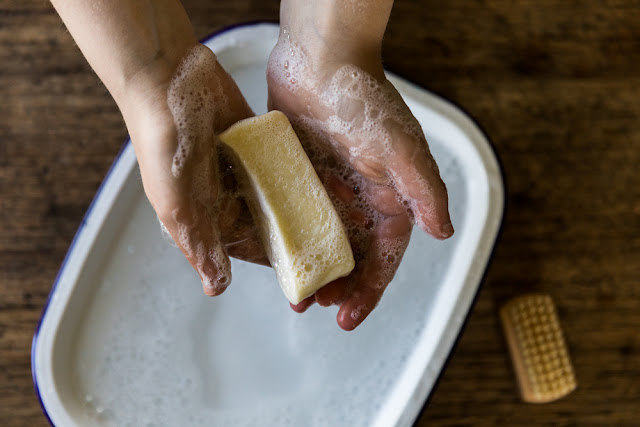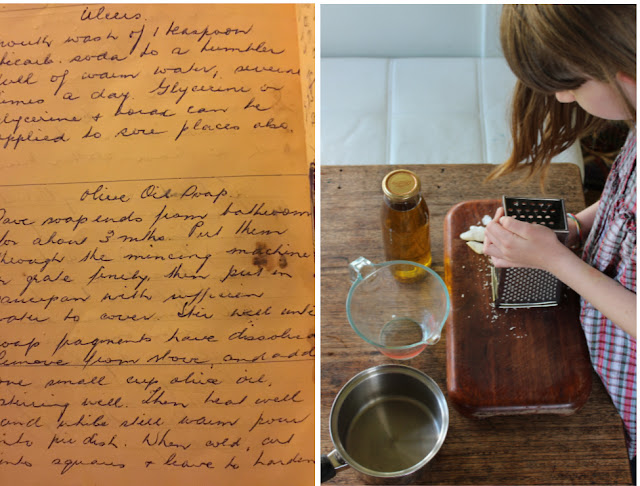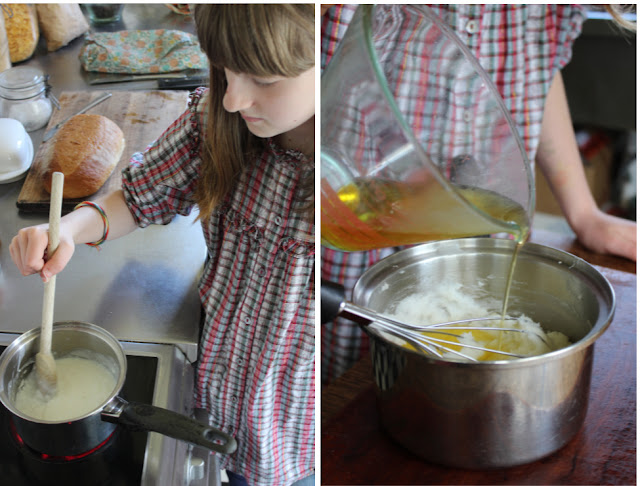There's an elephant in the room, when it comes to waste-free living. In the majority of households attempting to reduce their waste, it is still largely the work of women. Women often have the desire to make change in practical ways, and carry the burden of researching and strategising ways to implement waste-free shifts in their households. Women and children worldwide are also most likely to suffer the impacts of environmental issues and poor waste-management. It's been well documented that women are at the forefront of the actual day-to-day work of environmental change. Anecdotally, Oberon and I have seen it in the Facebook group we run (Zero Waste Tasmania), where more than 80% of members are women. And across social media, the majority of accounts devoted to the practical business of zero waste living are women. Women are the ones buying our book, although hopefully the men in their lives are reading it and trying things, too, and we've addressed this in the book. Waste-free living doesn't have to be burdensome. In fact, it can be joyful and enriching as you find a closer connection and care for nature. It's even fun! But in our home, it's fun, and not burdensome, because it's shared.
Women carry the mental and physical load of waste-free living, and we need to see that shifted. It has to shift for more of us to be able to make space to take more waste-free living practices on. It was the manufacturing of plastic packaged products and 'convenience' foods that simultaneously gave women freedom from their homes and created the huge environmental problem we face today. Meanwhile, men have, for the most part, carried on as usual, embracing 'convenience' products and being left somewhat off the hook. This has to change, for all our sakes, but especially for our children who will discover the full effect of choosing 'convenience' over responsibility.
But for today, on International Women's Day, I'm going to leave the mental load of pushing for that shift to the men-folk (thanks, Huz), and recognise and celebrate the women who have done so much practical work to care for their families, their homes and our planet. I'm often drawn to think, on such days, of the people who lived on the patch of land where I live, before me. First the muwinina women who cared for it so very well that only a midden and stone fish traps by the foreshore remain as evidence that they'd impacted this land. And then the farmer's wife, who possibly seldom made it to our patch of the orchard while she tended her home and garden. Or the housewife who lived here before us, who saw fit to install lots of small cupboards for their preserves, which inspired me to think about filling them with preserves of our own.
While we were in the process of compiling recipes for our book, I visited my Mum's place and she pulled out a couple of notebooks she'd had stored away. Simple notebooks featuring beautiful handwriting, on plain, lined paper, yellowed now from age. The pages were filled with recipes and notes, taken by my two grandmothers, who began them as young, newly married housewives. They began writing them towards the end, and immediately after WW2, and both notebooks reflect how they were striving to stretch their resources further when they were required to keep their homes running, and families fed, on very little. It was a time when food was rationed, Victory gardens were encouraged, and wasting food was illegal or very much frowned upon. And women bore the brunt of that work.
But for today, on International Women's Day, I'm going to leave the mental load of pushing for that shift to the men-folk (thanks, Huz), and recognise and celebrate the women who have done so much practical work to care for their families, their homes and our planet. I'm often drawn to think, on such days, of the people who lived on the patch of land where I live, before me. First the muwinina women who cared for it so very well that only a midden and stone fish traps by the foreshore remain as evidence that they'd impacted this land. And then the farmer's wife, who possibly seldom made it to our patch of the orchard while she tended her home and garden. Or the housewife who lived here before us, who saw fit to install lots of small cupboards for their preserves, which inspired me to think about filling them with preserves of our own.
While we were in the process of compiling recipes for our book, I visited my Mum's place and she pulled out a couple of notebooks she'd had stored away. Simple notebooks featuring beautiful handwriting, on plain, lined paper, yellowed now from age. The pages were filled with recipes and notes, taken by my two grandmothers, who began them as young, newly married housewives. They began writing them towards the end, and immediately after WW2, and both notebooks reflect how they were striving to stretch their resources further when they were required to keep their homes running, and families fed, on very little. It was a time when food was rationed, Victory gardens were encouraged, and wasting food was illegal or very much frowned upon. And women bore the brunt of that work.
As I turned the pages of hints & tips, so often shared by friends or in newspaper articles, government publications and magazines in a time before Google, I found many that looked like the handy hints we've come to know and love, in our waste-free living travels. But one of my favourites as I flicked through, was my maternal grandmother's method of using up all the old soap ends to make new soap. I snapped a photo so I could bring it home to try. I never met Doris, my mum's Mum. So having a little routine of hers in our own family rhythm seemed like a wonderful idea. So we saved up the soap ends, and gave it a try.
I had to do a little tweaking and estimating to quantify things like how many soap ends a family might make in 3 months, or how big a small cup or her pie dish might be. But we got there in the end. I was delighted to share the making of it with Little Owlet, and I'm happy to say it worked well. And so we have olive oil scrap soap in our home, stretching our resources further, and creating a beautiful product from old, as my grandmother did. Here we've shared the recipe, as you can find it in our book. It's one that's dear to our hearts.
I had to do a little tweaking and estimating to quantify things like how many soap ends a family might make in 3 months, or how big a small cup or her pie dish might be. But we got there in the end. I was delighted to share the making of it with Little Owlet, and I'm happy to say it worked well. And so we have olive oil scrap soap in our home, stretching our resources further, and creating a beautiful product from old, as my grandmother did. Here we've shared the recipe, as you can find it in our book. It's one that's dear to our hearts.
MAKE THIS :: Olive Oil Scrap Soap
What you'll need:

1 cup soap ends
1/2 cup olive oil, plus extra for oiling
soap mould - a small glass baking dish works nicely
1 cup water
STEP 1
1 cup water
STEP 1
Grate the soap ends and place them in a
saucepan with water. Make sure the water just covers the soap.
STEP 2
Place over a medium heat and stir well until
the soap fragments have dissolved.
STEP 3
Remove from the stove and add olive oil,
stirring well.
STEP 4
Beat well with a whisk and, while the
mixture is still warm, pour it into an oiled
dish or mould.
STEP 5
When the soap block is completely cold,
turn it out onto a board and cut it into
squares.
STEP 6
Leave your new soap bars to harden for
a few days before using.
........
Our book 'A Family Guide to Waste-Free Living' is available in all good bookshops (including ours!), and libraries now. Published by Plum Books and featuring photographs by Natalie Mendham, who also took the first picture in this blog post.
~ Lauren. xx
........
Our book 'A Family Guide to Waste-Free Living' is available in all good bookshops (including ours!), and libraries now. Published by Plum Books and featuring photographs by Natalie Mendham, who also took the first picture in this blog post.
~ Lauren. xx



